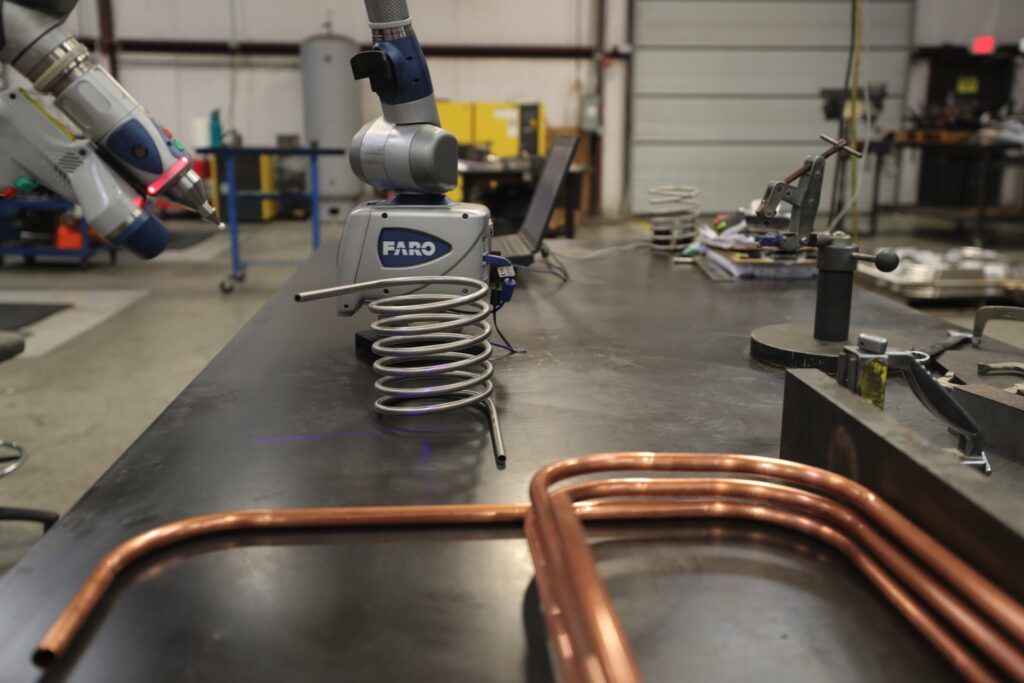Metal tube fabrication is the process of creating metal tubes from raw materials. This can be done through a variety of processes, each with its own advantages and disadvantages. The most common methods of metal tube fabrication include:

- Extrusion: This process involves forcing molten metal through a die to create a long, continuous tube. Extrusion is a versatile process that can be used to produce tubes of different sizes and shapes.
- Welding: This process involves joining two pieces of metal together using heat and pressure. Welding is often used to create tubes that are too large or complex to be extruded.
- Forming: This process involves shaping a metal sheet into a tube. Forming is often used to create small, intricate tubes.
- Machining: This process involves using machine tools to remove material from a metal tube to create a specific shape or size. Machining is often used to create precision tubes for applications such as medical devices and aerospace components.
The choice of fabrication process depends on the specific requirements of the application. For example, extrusion is a good choice for producing large quantities of tubes with consistent dimensions, while welding is a good choice for creating tubes with complex shapes.
Types of Metal Tubes
The most common types of metal tubes are made from steel, stainless steel, aluminum, and copper. Each type of metal has its own unique properties that make it suitable for different applications.
- Steel tubes: Steel tubes are strong and durable, making them ideal for applications where strength is important. Steel tubes are also relatively inexpensive, making them a popular choice for a variety of applications.
- Stainless steel tubes: Stainless steel tubes are corrosion-resistant, making them ideal for applications where the tube will be exposed to water or chemicals. Stainless steel tubes are also stronger and more durable than regular steel tubes, making them a good choice for high-pressure applications.
- Aluminum tubes: Aluminum tubes are lightweight and strong, making them ideal for applications where weight is a major concern. Aluminum tubes are also relatively inexpensive, making them a popular choice for a variety of applications.
- Copper tubes: Copper tubes are good conductors of heat and electricity, making them ideal for applications where these properties are important. Copper tubes are also relatively soft and malleable, making them easy to work with.
Applications of Metal Tubes
Metal tubes are used in a wide variety of applications, including:
- Construction: Metal tubes are used to construct buildings, bridges, and other structures.
- Automotive: Metal tubes are used in cars, trucks, and other vehicles.
- Aerospace: Metal tubes are used in airplanes, helicopters, and other aircraft.
- Medical: Metal tubes are used in medical devices such as catheters and stents.
- Industrial: Metal tubes are used in a variety of industrial applications, such as piping and manufacturing.
Conclusion
Metal tube fabrication is a versatile process that can be used to create a wide variety of tubes with different properties and applications. The choice of fabrication process depends on the specific requirements of the application.
I hope this article has given you a better understanding of metal tube fabrication. If you have any further questions, please feel free to ask.
Source Url :- https://shorturl.at/mxzLN